In Turkey, the Protests Continue
The Turkish protests that began in May in Taksim Square are already fading from the collective media consciousness, although their existence and endurance is far from having faded and is instead increasing in the collective consciousness of the Turkish people. I came to Istanbul to document the uprising and its development, and to talk with the Turkish people about the future of the Taksim Square/Gezi Park protests and their crystallization, or lack thereof, in Turkish society and the political arena.
First it should be noted that despite the enormous police presence that has made it almost impossible for Turkish youth, workers and concerned citizens to continue to demonstrate in Taksim square, brave activists and protesters still risk their lives at least once a week. Often more frequently, and sometimes every day, they demonstrate and attempt to reach the Square from the Istikal Cadessi, in the exercise of their rights to freedom of assembly and speech. For those who look at Taksim Square and wonder where the protests have gone, one should point out that they have not disappeared but have, rather, decentralized to other parts of the city, most notably Kadikoy.
Kadikoy is a municipality on the Anatolian side of the city of Istanbul. Until early September 2013, activists preferred this location for the meetings, forums and assemblies that would then form the backbone of the weekly Taksim Square protests. As the Mayor of Kadikoy was sympathetic to the protesters, he allowed them to gather in Yogurtcu Park peacefully, without police presence or interference.
The Park in Kadikoy is reminiscent of many Occupy camps that I went through during the heyday of the Occupy movements a couple of years ago. The main differences are that no sleeping tents are set up, and the organizational structure of the camp is much better founded, despite being just as democratic, if not more. It is not unusual for assemblies in this park to last from early evening into the wee hours of the morning. More than an Occupy camp, the Park in Kadikoy should be considered the open-air headquarters of a democratically participatory activist organization that features public forums, free tea/coffee dispensaries, workshops, activist meetings, and even a kindergarten and nursery in which parents can deposit their children to be watched while the parents engage in the park’s activities.
The situation has changed since the death of 22-year old youth activist Ahmet Atakan. On the night of September 10, 2013, riot police forces shot Atakan in the back of the head with a tear-gas canister. Despite numerous witness reports and the official autopsy, the authorities refuse to take responsibility for this death and to start a formal inquiry, as they maintain that Mr. Atakan died because of an accidental fall from a building (although the death, in reality, resulted from the shot to the head). Ahmet Atakan is now the sixth person to have been officially killed since the recent uprisings in Turkey.
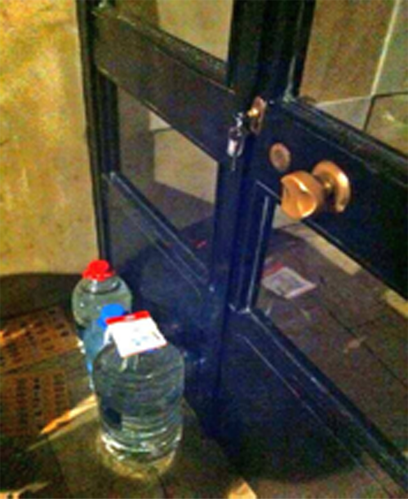
Kadikoy’s residents leave keys to buildings to provide shelters to protesters from riot police. The water bottles are to relieve the effects of tear gas.
Atakan’s death caused a public outrage that translated into a call for mass demonstrations in Kadikoy, and then Taksim the next day. It was a surprise to the protesters, accustomed to a relatively safe environment, to have to clash with the “boys in blue” in Kadikoy, as they were accustomed to sympathetic treatment from the local mayor and police. Since Istanbul lost the Olympic bid, the local government is no longer concerned with how the treatment of dissent and protesters will reflect on their reputation as an Olympic host. Furthermore, it seems that the police officers who were deployed in the previously peaceful municipality of Kadikoy did not come from the municipality itself, but rather from other municipalities of the city that have no qualms in squashing dissent. The unexpected police repression and outrage of the protesters made for an explosive mixture that inevitably transformed itself into violent clashes between the two fronts. Kadikoy was on fire, quite literally.
It is strange for Europeans, accustomed to have the police adhere at least to a minimum standard of legality, see law enforcement officers brazenly break the doors and windows of houses with impunity and without a warrant, to seek out and detain protesters or those who hide inside them. This is commonplace in Turkey however, where police forces have been given enormous leeway, yet little legal scrutiny and supervision, in the application of their authority. Historically and ironically, this was the role of the armed forces of the military, which are now sympathetic to the secular demands of the protesters. This sympathy, however, must not be seen as a genuine support for the democratic revolutionary change demanded by the Taksim/Gezi/Kadikoy activists, who are suddenly being embraced by the armed forces after 60 years of iron-fist rule. Rather, it should be seen as an opportunistic alliance against what the armed forces see as a common enemy: the increasingly religious and patriarchal government led by Recep Teyyip Erdogan and the AKP (Justice and Progress Party, which he leads), and a concrete example of the old axiom “the enemy of my enemy is my friend.”
Should the protests succeed in eroding Erdogan’s power and electoral success, this would naturally result in a power vacuum. This power vacuum has the potential to be filled either by genuine revolutionary movements or by the military and the secular republican forces, which are inherently no less despotic or patriarchal than Erdogan and the AKP but are instead just of a different political nature. Given the current limitations that prevent any party or movement to partake in elections unless it holds a minimum of 10 percent of the electorate, it is unlikely that the current revolutionary struggles in Turkey will be able to crystallize themselves in an institutional fashion. This could be seen both as a blessing and as a curse, but one thing is certain: unless Turkey’s political system is fundamentally restructured, the discontent among the population will increase and become more violent and volatile.
Protesters build barricades with benches, trash, flower pots, trash bins and furniture to prevent armored vehicles from approaching as they flee from the police on foot. Police forces locate the protesters behind the barricade; they get into a standoff for tens of minutes in which the police shoot rubber gas-filled bullets, tear gas, and water cannons; the protesters throw bottles, rocks and anything that they can get their hands on at the police. Once the protesters run out of projectiles, the police try to rush their position, at which point the protesters flee behind yet another barricade or seek refuge in nearby apartments, shops and houses and eventually regroup.
Editor’s Note: Photographs one, two, four, seven and eight by Eser Karadag. Photograph five by Sener Yilmaz Aslan.
Related Articles


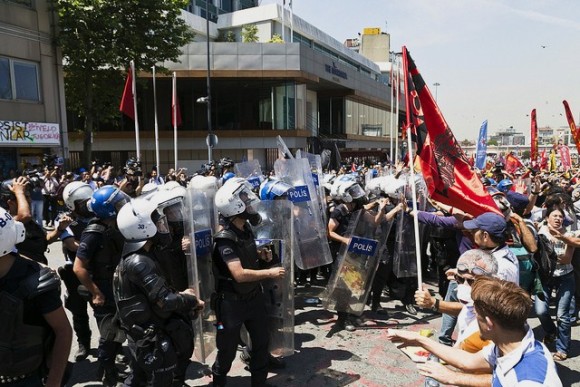


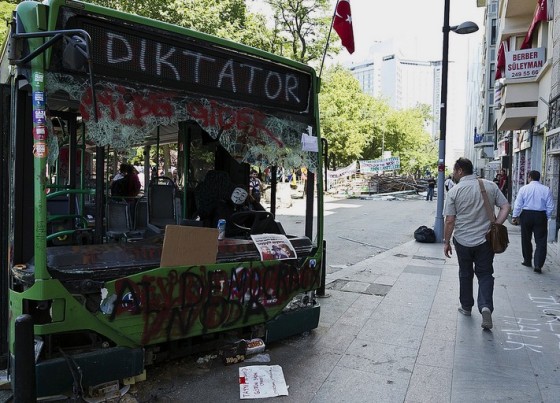
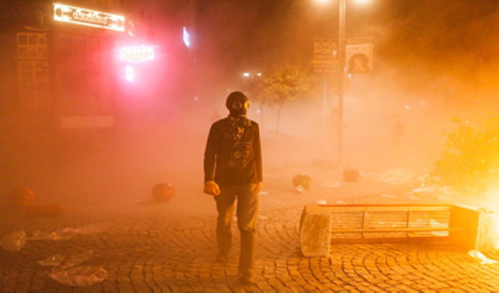
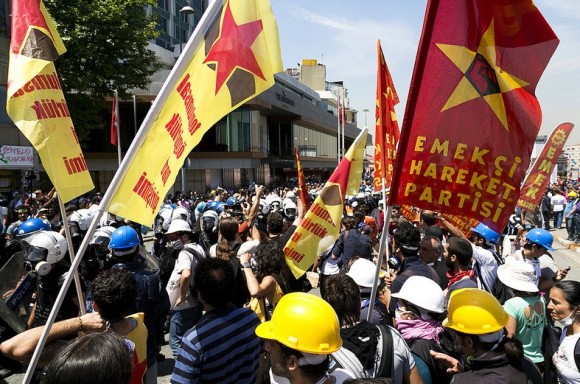
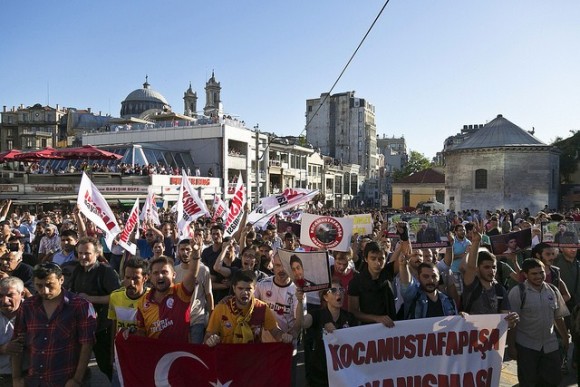











2 Responses to In Turkey, the Protests Continue
You must be logged in to post a comment Login